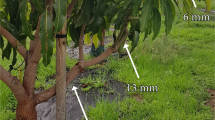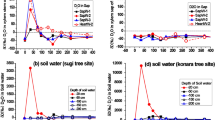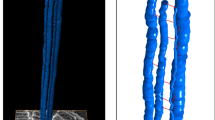Abstract
IN a laboratory study of the rate of flow of water through sapwood samples of Pseudotsuga taxifolia (Poir.) Britt., Pinus nigra Arnold, and P. radiata D. Don., the effective water-conducting areas were determined by using aqueous solutions of various dyes. It was observed that water-flow in the direction of the grain was restricted to the early wood, and that the late wood only became coloured, if at all, by later diffusion of dye, especially along wood rays. When acid fuchsin was used the wood became almost uniformly coloured due to the ready diffusion of this dye across the late wood, but when safranin was used the late wood remained unstained.
This is a preview of subscription content, access via your institution
Access options
Subscribe to this journal
Receive 51 print issues and online access
$199.00 per year
only $3.90 per issue
Buy this article
- Purchase on Springer Link
- Instant access to full article PDF
Prices may be subject to local taxes which are calculated during checkout
Similar content being viewed by others
References
Harris, J. Maddern, New Phyt., 53, 517 (1954).
Author information
Authors and Affiliations
Rights and permissions
About this article
Cite this article
HARRIS, J. Water-Conduction in the Stems of Certain Conifers. Nature 189, 678–679 (1961). https://doi.org/10.1038/189678b0
Issue Date:
DOI: https://doi.org/10.1038/189678b0
This article is cited by
Comments
By submitting a comment you agree to abide by our Terms and Community Guidelines. If you find something abusive or that does not comply with our terms or guidelines please flag it as inappropriate.



